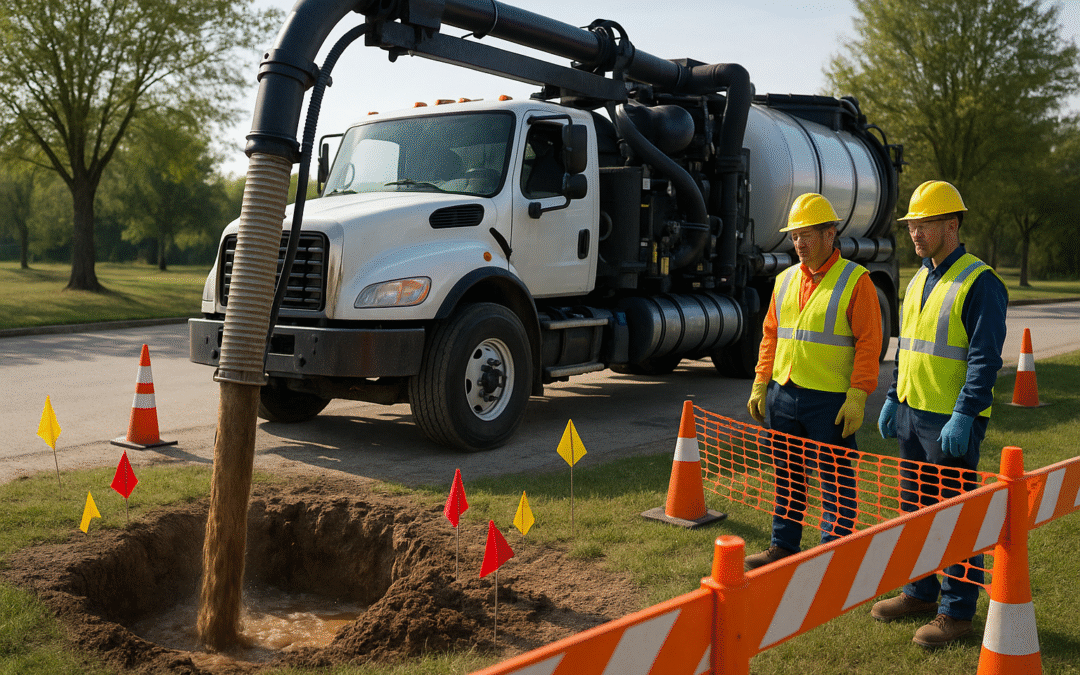Hydro excavation is now a necessary technique for safely exposing underground utilities, pipelines and other infrastructures. Hydro excavation differs from traditional, manual digging in that high-pressure water and vacuum action are used to push soil aside with minimal probability of damaging nearby buildings.
Although such an approach is very effective, utilising the sphere around utilities involves meticulous planning and safety rules. Adherence to safe hydro excavation methods is important to avoid accidents and property damage as well as service disruption.
Hydro Excavation Knowledge
Hydro excavation Wet excavation consists of two systems, one of which is pressurised water and the other is a vacuum system. The water loosens the soil, and finally, the vacuum cleans up the rubble of the excavation location.
The process minimises the chances of tearing up underground utilities such as gas and water pipes as well as electrical cables.
Despite this safety tool, errors may also be very dangerous. The safety of your team and the utility’s integrity are necessary in making sure your team adheres to safe hydro excavation methods.
Plan Your Excavation
When carrying out a hydro excavation project, planning is the initial step. A site assessment involving the identification of all known utilities should be carried out before the excavation begins. Call local utility companies and verify locations, and ask them to mark them.
Planning ensures the knowledge of the environment and indirect dangers for the excavation team. Safe hydro excavation techniques incorporated into the planning phase will greatly mitigate potential accidents and damage to underground assets.
Use the Right Equipment
It is important to use the appropriate hydro excavation tools. Make sure that your high-pressure water and vacuum units suit the soil type and nature of the project undertaken. Water pressure can be adjusted to allow the operator to adjust the force to avoid damaging utilities, and compaction of soil is possible.
Safe hydro excavation practices encompass routine servicing and checking of all equipment to avert any malfunctions or pressure that may result in on-site safety.
Train Your Team
It is an element of safe hydro excavation to be trained properly. All operators are to be taught the latest excavated hydro methods, guidelines, and safety guidelines, as well as emergency handling. Learning ways to recognise and react to possible dangers minimises the severity of accidents.
The members of the team are also supposed to be conversant with site risks and underground utility locations. When the safe hydro excavation procedure is followed, all team members have the means to cope efficiently and safely with challenges.
Keep a Good Distance from Utilities
Although the hydro excavation is meant to cause minimal harm, it is important to ensure that there is a safe distance between the utilities. Begin to dig a distance away from the utility line and then come nearer to it. Reduce or increase water pressure as you approach to avoid striking.
Safe hydro excavation practices focus on the consideration of controlled and cautious excavation around critical infrastructure to avoid service disruption or risky accidents.
Supervise the digging operation
Excavation requires constant supervision in order to be safe. The operators are also supposed to monitor the density of the soil or unusual hindrances. The team members must keep in touch with each other to organise the movements and react in the shortest possible time in case of any problems.
One of the safest hydro excavation practices is the use of spotters or supervisors who can observe the process and make short-term corrections if needed to mitigate the risk of accidents.
Mark and identify utilities categorically
Underground utilities should be properly marked in place, which is a basic practice of safety. Apply standardised colour codes to denote various forms of utilities, including gas, water, and electric lines.
The uniform identification assists the operators in observing safe distances and employing proper excavation methods. The use of safe hydro excavation techniques means that markings are clear and updated regularly, particularly when excavation takes more than a day or shift.
Adhere to Regulatory Standards
Any excavation project must comply with local rules and industry requirements. Safe excavation, equipment, and distance requirements may be regulated concerning the distance between utilities and equipment.
Such adherence to the standards not only guarantees legal functionality but also enhances safety measures at the location. Safe hydro excavation practices dictate that teams should be aware of changes in regulations and apply them continuously.
Use Protective Barriers
Barrier protection may be used as an additional safety measure in hydro excavation. Barriers ensure unintentional access to the excavation site and help regulate traffic in case the excavation site is close to roads or pedestrian zones.
They also guard against falling debris or accidental interference with equipment and staff. Hydro excavation safe practices involve the provision of the right barriers, warning signs, and safety cones to establish a safe working environment.
Read our blog about Professional Hydro Excavation Safety Tips.
Conclusion
Hydro excavation is a safe and efficient procedure for exposing underground utilities when done properly. The operations close to the critical infrastructure require strict compliance with safety measures.
To get professional hydro excavation services in Melbourne, turn to the professionals of VWD Group. Contact us by phone: 1300 893 366 or by email: info@vwdGroup.com.au.

